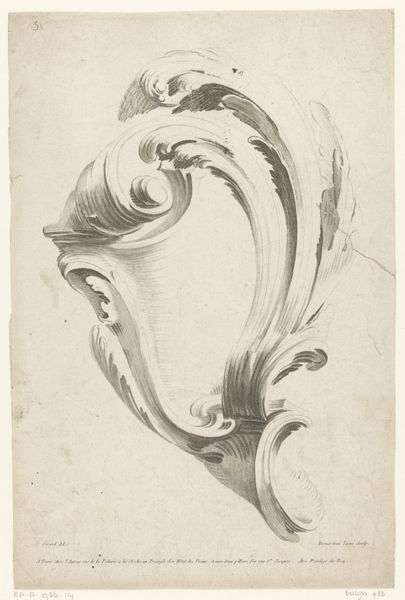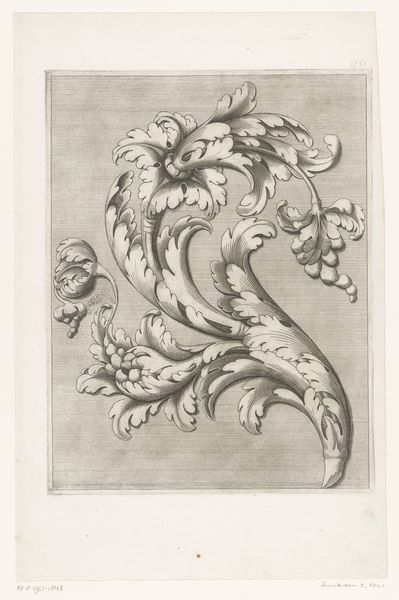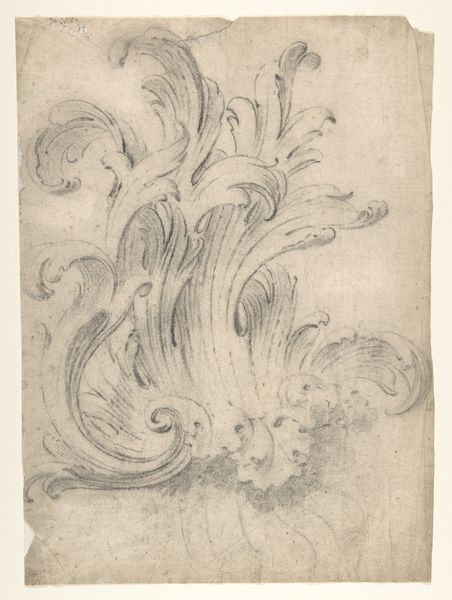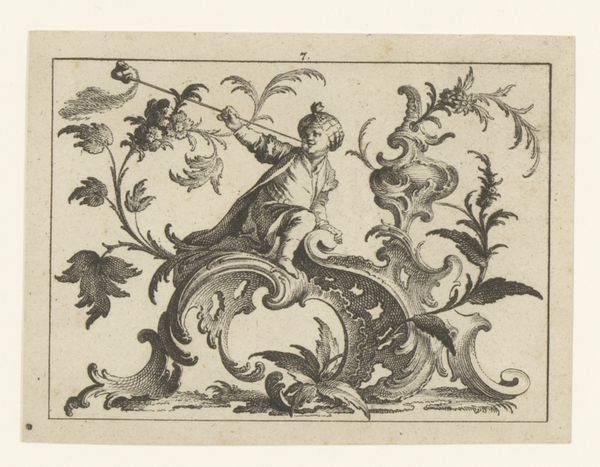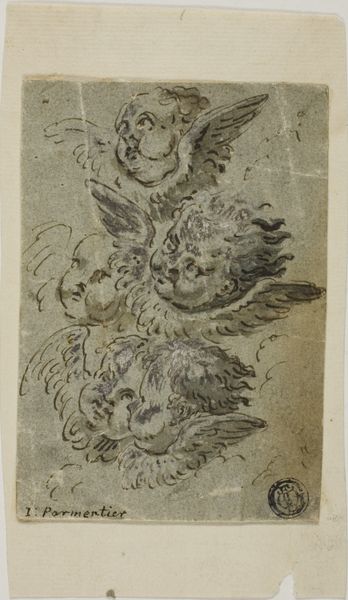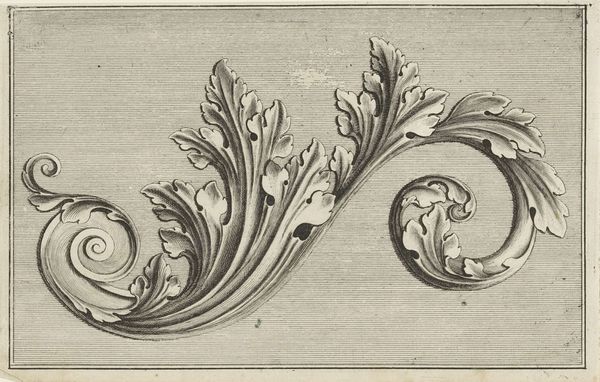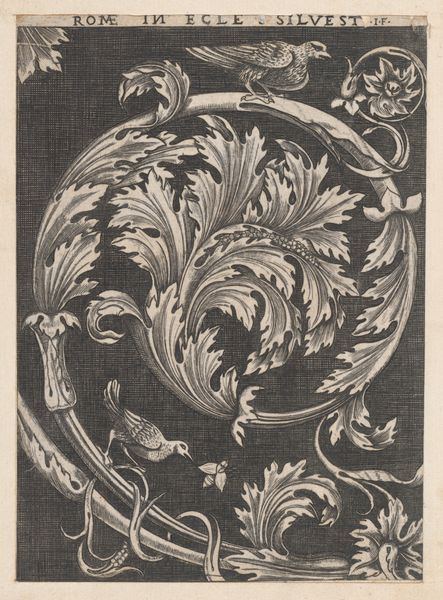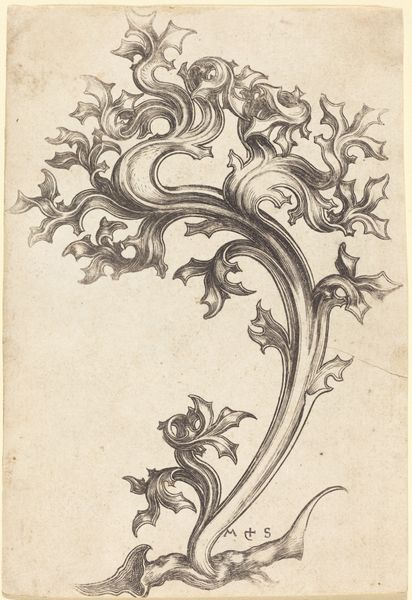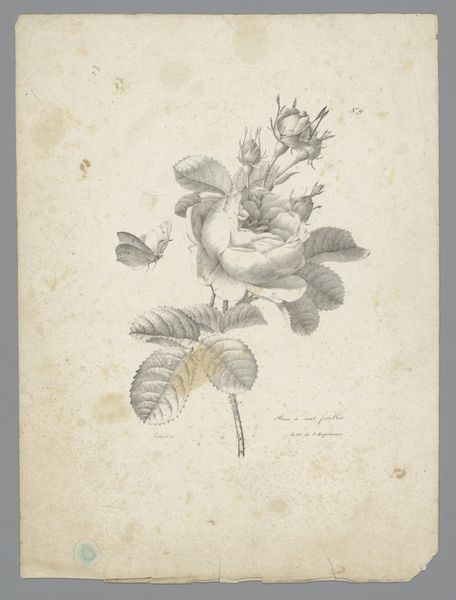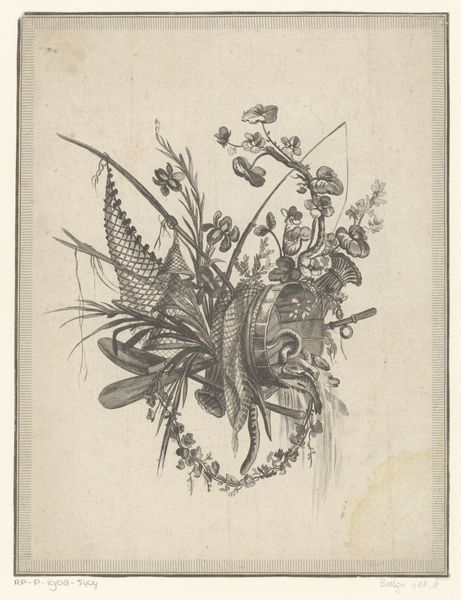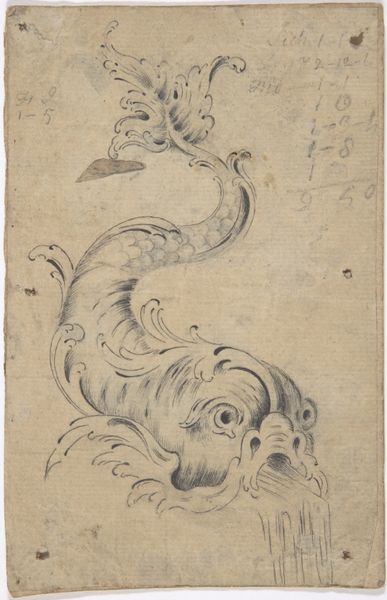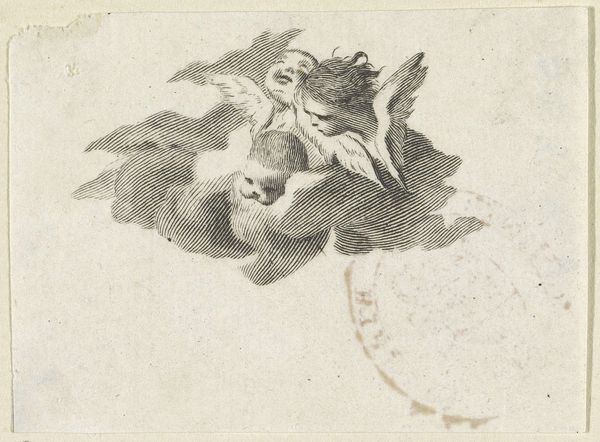
drawing, paper, pencil
#
drawing
#
paper
#
form
#
geometric
#
pencil
#
line
#
rococo
Dimensions: height 335 mm, width 223 mm
Copyright: Rijks Museum: Open Domain
Curator: We’re looking at a piece called "Rocaille cartouche" made between 1761 and 1769 by Gilles Demarteau. It's a drawing executed in pencil on paper. What is your first take? Editor: Striking. The swirling lines immediately catch the eye, creating a sense of dynamism. The shading gives depth, suggesting a three-dimensional form emerging from the page, almost like a wave. Curator: Absolutely, that energy embodies the Rococo period beautifully. The cartouche itself would have functioned as an ornamental frame. Think of it not as an independent artwork necessarily but as a fragment pointing to broader societal structures, like the lavish interiors it would have adorned, often in spaces of power. Editor: The linework is interesting. Look at the way the strokes vary in thickness and direction, creating texture and implying volume. It is more than representation. We see process. Curator: The form of this rocaille cartouche speaks volumes, literally and figuratively. Rococo designs often obscured class divides through their sheer excess, presenting an artificial sense of shared cultural values under the aristocracy. Editor: While acknowledging the context, I am also drawn to its inherent aesthetic appeal. It speaks to universal principles of design: balance, rhythm, and proportion. Curator: Agreed. Although often gendered feminine due to its perceived delicacy and curves, challenging that perspective allows us to appreciate it outside such confining societal structures. Its form transcends simple categorization. Editor: Perhaps what we are left with is that the beauty isn't despite the original framework but precisely *because* of the structural composition. Curator: Exactly. Understanding both its societal position and pure visual dynamics deepens the conversation, enriching our perspective. It prompts important reflections on form and its cultural resonance.
Comments
No comments
Be the first to comment and join the conversation on the ultimate creative platform.
